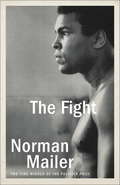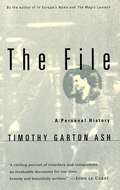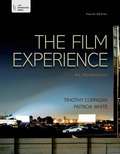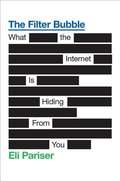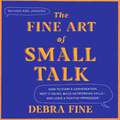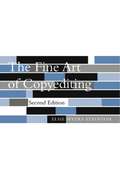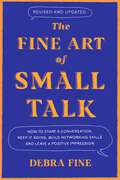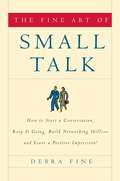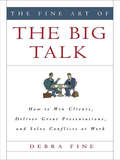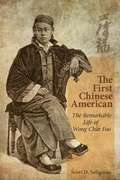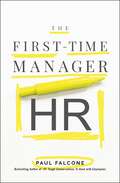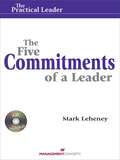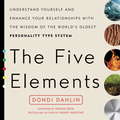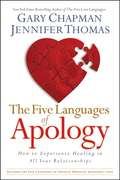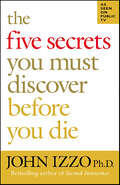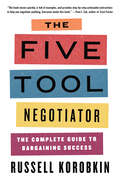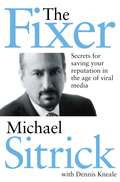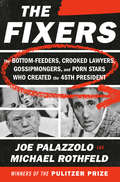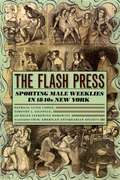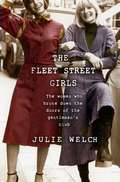- Table View
- List View
The Fight
by Norman MailerIn 1974 in Kinshasa, Zaïre, two African American boxers were paid five million dollars apiece to fight each other. One was Muhammad Ali, the aging but irrepressible "professor of boxing." The other was George Foreman, who was as taciturn as Ali was voluble. Observing them was Norman Mailer, a commentator of unparalleled energy, acumen, and audacity. Whether he is analyzing the fighters' moves, interpreting their characters, or weighing their competing claims on the African and American souls, Mailer's grasp of the titanic battle's feints and stratagems--and his sensitivity to their deeper symbolism--makes this book a masterpiece of the literature of sport.
The Fight over Digital Rights
by Bill D. HermanIn the political fight over copyright, Internet advocacy has reshaped the playing field. This was shown in the 2012 'SOPA blackout', when the largest online protest in history stopped two copyright bills in their tracks. This protest was the culmination of an intellectual and political evolution more than a decade in the making. This book examines the debate over digital copyright, from the late 1980s through early 2012, and the new tools of political communication involved in the advocacy around the issue. Drawing on methods from legal studies, political science and communications, it explores the rise of a coalition seeking more limited copyright, as well as how these early-adopting, technology-savvy policy advocates used online communication to shock the world. It compares key bills, congressional debates, and offline and online media coverage using quantitative and qualitative methods to create a rigorous study for researchers that is also accessible to a general audience.
The File: A Personal History
by Timothy Garton AshIn 1978, fresh out of Oxford, Timothy Garton Ash set out for Berlin to see what he could learn from the divided city about freedom and despotism. As he moved from west to east - from Berlin glamour to Berlin danger - the East German secret police, the so-called Stasi, was compiling a secret file on his activities, monitoring his Berlin days and nights and tracking his growing involvement with the Solidarity movement in Poland. Fifteen years later, with the wall torn down and Berlin now unified, Garton Ash visited Stasi headquarters to find his file. The thick dossier he was given forms the basis for this real-life thriller in which he traces and confronts the German friends and acquaintances who informed on him, and the officers who hired them. Behind Stasi reports of suspicious meetings we discover the love affairs, friendships, and formative intellectual encounters that actually occurred. And behind a baffling web of lies, half-truths, and forgotten stories we find a forty-year-old man spying on his younger self.
The File: A Personal History
by Timothy Garton Ash"Eloquent, aware and scrupulous . . . a rich and instructive examination of the Cold War past." --The New York TimesIn 1978 a romantic young Englishman took up residence in Berlin to see what that divided city could teach him about tyranny and freedom. Fifteen years later Timothy Garton Ash--who was by then famous for his reportage of the downfall of communism in Central Europe--returned. This time he had come to look at a file that bore the code-name "Romeo." The file had been compiled by the Stasi, the East German secret police, with the assistance of dozens of informers. And it contained a meticulous record of Garton Ash's earlier life in Berlin. In this memoir, Garton Ash describes what it was like to rediscover his younger self through the eyes of the Stasi, and then to go on to confront those who actually informed against him to the secret police. Moving from document to remembrance, from the offices of British intelligence to the living rooms of retired Stasi officers, The File is a personal narrative as gripping, as disquieting, and as morally provocative as any fiction by George Orwell or Graham Greene. And it is all true."In this painstaking, powerful unmasking of evil, the wretched face of tyranny is revealed." --Philadelphia Inquirer
The Film Experience: An Introduction
by Patricia White Timothy CorriganIn our culture, watching movies is a universal experience - but understanding film may not be. The Film Experience reaches out to students, connecting their experiences watching movies with better understanding and knowledge of the medium's full scope. And with its game-changing new video program in LaunchPad Solo (see below), this thoroughly updated new edition makes it easier than ever to link each student's personal viewing to a greater overall understanding of film.Timothy Corrigan and Patricia White's classroom favorite is both authoritative and joyful about watching, analyzing, and understanding film. With clips from classic and contemporary films (Rear Window, Life of Pi, Moonrise Kingdom, Chinatown, and many others) plus hundreds of movie images and other graphics, the thoroughly revised new edition covers everything from editing to cinematography to narrative genres, all in a cultural context that reinforces why films and film study matter. The book's features--Form in Action, Film in Focus, and Concepts at Work --combine text, stills, and links to videos online to explore specific films, scenes, and trends in depth.
The Filter Bubble
by Eli PariserAn eye-opening account of how the hidden rise of personalization on the Internet is controlling-and limiting-the information we consume. In December 2009, Google began customizing its search results for each user. Instead of giving you the most broadly popular result, Google now tries to predict what you are most likely to click on. According to MoveOn. org board president Eli Pariser, Google's change in policy is symptomatic of the most significant shift to take place on the Web in recent years-the rise of personalization. In this groundbreaking investigation of the new hidden Web, Pariser uncovers how this growing trend threatens to control how we consume and share information as a society-and reveals what we can do about it. Though the phenomenon has gone largely undetected until now, personalized filters are sweeping the Web, creating individual universes of information for each of us. Facebook-the primary news source for an increasing number of Americans-prioritizes the links it believes will appeal to you so that if you are a liberal, you can expect to see only progressive links. Even an old-media bastion like The Washington Post devotes the top of its home page to a news feed with the links your Facebook friends are sharing. Behind the scenes a burgeoning industry of data companies is tracking your personal information to sell to advertisers, from your political leanings to the color you painted your living room to the hiking boots you just browsed on Zappos. In a personalized world, we will increasingly be typed and fed only news that is pleasant, familiar, and confirms our beliefs-and because these filters are invisible, we won't know what is being hidden from us. Our past interests will determine what we are exposed to in the future, leaving less room for the unexpected encounters that spark creativity, innovation, and the democratic exchange of ideas. While we all worry that the Internet is eroding privacy or shrinking our attention spans, Pariser uncovers a more pernicious and far- reaching trend on the Internet and shows how we can- and must-change course. With vivid detail and remarkable scope, The Filter Bubble reveals how personalization undermines the Internet's original purpose as an open platform for the spread of ideas and could leave us all in an isolated, echoing world. .
The Fine Art Of Small Talk: How to Start a Conversation, Keep It Going, Build Networking Skills – and Leave a Positive Impression!
by Debra FineIn this bestselling guide to social success, communication expert Debra Fine reveals the techniques and strategies anyone can use to make small talk in any situation.Does striking up a conversation with a stranger make your stomach do flip-flops? Do you spend time hiding out in the bathroom at social gatherings? Do you dread the very thought of networking? Is scrolling your phone a crutch to avoid interacting?Help is on the way with The Fine Art of Small Talk, the classic guide that's now revised for the modern era. Small talk is more than just chitchat; it's a valuable tool to help you climb the corporate ladder, widen your business and social circles, and boost your self-confidence. With practical advice and simple conversation 'cheat sheets,' this book offers easy-to-learn techniques that will allow you to feel comfortable in any type of social situation-from a video meeting to a first date to a cocktail party where you don't know a soul. Communication expert Debra Fine will show you how to:- Learn to connect with others regardless of the occasion, event or situation- Come across as composed and self-assured when entertaining - Avoid awkward silences and 'foot in mouth' disease- Convey warmth and enthusiasm so that other people feel good about being near you - Make a positive, lasting impression from the minute you say hello. Once you master The Fine Art of Small Talk, you'll excel at making others feel included, valued and comfortable. Let Debra Fine turn you into a small-talk expert - and watch the contacts, business deals and social relationships multiply before your eyes!
The Fine Art of Copyediting (2nd Edition)
by Elsie Myers StaintonIncludes Advice To Editors On How To Get Along With Authors, And Tips On Style For Both.
The Fine Art of Copyediting: Including Advice To Editors On How To Get Along With Authors, And Tips On Style For Both
by Elsie Myers StaintonMany stylebooks and manuals explain writing, but before the release ten years ago of Elsie Myers Stainton's The Fine Art of Copyediting, few addressed the practices and problems of editing. This handbook has guided users through the editing process for books and journals, with tips on how to be diplomatic when recommending changes, how to edit notes and bibliographies, how to check proofs, and how to negotiate the ethical, intellectual, and emotional problems characteristic of the editorial profession. Now featuring solid advice on computer editing and a new chapter on style, as well as more information on references, bibliographies, indexing, and bias-free writing, The Fine Art of Copyediting, Second Edition offers the same wealth of information that prompted William Safire to commend the first edition in The New York Times Magazine.Complete with helpful checklists for the manuscript, proof, and index stages of book production, as well as an excellent bibliography of reference works useful to the copyeditor, The Fine Art of Copyediting, Second Edition is an indispensable desk reference for writers and editors confronting a host of questions each day. Why use the word "people" instead of "persons?" What precautions are necessary for publishers to avoid libel suits? How can an editor win an author's trust? What type fonts facilitate the copyediting process? How does computer editing work? For experienced and novice copyeditors, writers and students, this is the source for detailed, step-by-step guidance to the entire editorial process.
The Fine Art of Small Talk: How to Start a Conversation, Keep It Going, Build Networking Skills – and Leave a Positive Impression!
by Debra FineIn this bestselling guide to social success, communication expert Debra Fine reveals the techniques and strategies anyone can use to make small talk in any situation. Help is on the way with The Fine Art of Small Talk, the classic guide that&’s now revised for the modern era. Small talk is more than just chitchat; it&’s a valuable tool to help you climb the corporate ladder, widen your business and social circles, and boost your self-confidence. With practical advice and simple conversation &“cheat sheets,&” this book offers easy-to-learn techniques that will allow you to feel comfortable in any type of social situation—from a video meeting to a first date to a cocktail party where you don&’t know a soul. Nationally recognized communication expert Debra Fine will show you how to: Learn to connect with others regardless of the occasion, event, or situation Come across as composed and self-assured when entertaining Avoid awkward silences and &“foot in mouth&” disease Convey warmth and enthusiasm so that other people feel good about being near you Make a positive, lasting impression from the minute you say hello. Once you master The Fine Art of Small Talk, you&’ll excel at making others feel included, valued, and comfortable. Let Debra Fine turn you into a small-talk expert—and watch the contacts, business deals, and social relationships multiply before your eyes!
The Fine Art of Small Talk: How to Start a Conversation, Keep It Going, Build Networking Skills--and Leave a Positive Impression!
by Debra FineNationally recognized communication expert Debra Fine reveals the techniques and strategies anyone can use to make small talk--in any situation. Do you spend an abnormal amount of time hiding out in the bathroom or hanging out at the buffet table at social gatherings? Does the thought of striking up a conversation with a stranger make your stomach do flip-flops? Do you sit nervously through job interviews waiting for the other person to speak? Are you a "Nervous Ned or Nellie" when it comes to networking? Then it's time you mastered The Fine Art of Small Talk.With practical advice and conversation "cheat sheets," The Fine Art of Small Talk will help you learn to feel more comfortable in any type of social situation, from lunch with the boss to an association event to a cocktail party where you don't know a soul.
The Fine Art of the Big Talk: How to Win Clients, Deliver Great Presentations, and Solve Conflicts at Work
by Debra FineWe all know what it's like to put off an important conversation at work--whether asking for a raise or promotion, or telling an employee that there's a problem with his or her performance. Now Debra Fine, conversation and communication guru, shows us how to come out on top of those dreaded office chats--and how to achieve what we want in each situation. Debra includes specific advice on exactly what to say, when to say it, and what body language to use to achieve the desired results. Learn how to: Become skilled at the art of quiet negotiation Determine your "sales" message Keep meetings on track and stick to an agenda Analyze what your body language conveys (often it's not what you think!) Overcome public-speaking fears Offer feedback to employees and bosses alike in a constructive, productive way Reduce conflict in the office and with customers and clients Fire someone or deny someone an expected promotion Inform that longtime supplier that his products haven't met with quality standards lately, and tell that major customer that her shipment is going to be late Master e-mail and voice messaging etiquette, and make a positive impression every time And much more.The Fine Art of the Big Talk is the perfect book for CEOs, managers, and principals, as well as staff and administration, who want to gain techniques that result in improved work environments, increased revenues, and positive interactions in the workplace.
The Finger: A Handbook
by Angus TrumbleFROM THE AUTHOR OF A BRIEF HISTORY OF THE SMILE, A COMPLETE INDEX OF THE DIGIT In this collision between art and science, history and pop culture, the acclaimed art historian Angus Trumble examines the finger from every possible angle. His inquiries into its representation in art take us from Buddhist statues in Kyoto to the ceiling of the Sistine Chapel, from cave art to Picasso's Guernica, from Van Dyck's and Rubens's winning ways with gloves to the longstanding French taste for tapering digits. But Trumble also asks intriguing questions about the finger in general: How do fingers work, and why do most of us have five on each hand? Why do we bite our nails? This witty, odd, and fascinating book is filled with diverse anecdotes about the silent language of gesture, the game of love, the spinning of balls, superstitions relating to the severed fingers of thieves, and systems of computation that were used on wharves and in shops, markets, granaries, and warehouses throughout the ancient Roman world. Side by side with historical discussions of rings and gloves and nail polish are meditations on the finger's essential role in writing, speech, sports, crime, law, sex, worhsip, memory, scratching politely at eighteenth-century French doors (instead of crudely knocking), or merely satisfying an itch—and, of course, in the eponymous show of contempt.
The First Chinese American
by Scott D. SeligmanChinese in America endured abuse and discrimination in the late nineteenth century, but they had a leader and a fighter in Wong Chin Foo (1847-1898), whose story is a forgotten chapter in the struggle for equal rights in America. <P><P>The first to use the term 'Chinese American,' Wong defended his compatriots against malicious scapegoating and urged them to become Americanized to win their rights. A trailblazer and a born showman who proclaimed himself China's first Confucian missionary to the United States, he founded America's first association of Chinese voters and testified before Congress to get laws that denied them citizenship repealed. <P><P>Wong challenged Americans to live up to the principles they freely espoused but failed to apply to the Chinese in their midst. This evocative biography is the first book-length account of the life and times of one of America's most famous Chinese - and one of its earliest campaigners for racial equality.
The First Texas News Barons
by Patrick Cox"Those interested in how power is used& #151as well as who gets to wield it-- will enjoy this contribution to the study of journalism, often called the rough draft of history. " -- East Texas Historical Association Newspaper publishers played a crucial role in transforming Texas into a modern state. By promoting expanded industrialization and urbanization, as well as a more modern image of Texas as a southwestern, rather than southern, state, news barons in the early decades of the twentieth century laid the groundwork for the enormous economic growth and social changes that followed World War II. Yet their contribution to the modernization of Texas is largely unrecognized. This book investigates how newspaper owners such as A. H. Belo and George B. Dealey of the Dallas Morning News, Edwin Kiest of the Dallas Times Herald, William P. Hobby and Oveta Culp Hobby of the Houston Post, Jesse H. Jones and Marcellus Foster of the Houston Chronicle, and Amon G. Carter Sr. of the Fort Worth Star-Telegram paved the way for the modern state of Texas. Patrick Cox explores how these news barons identified the needs of the state and set out to attract the private investors and public funding that would boost the state's civic and military infrastructure, oil and gas industries, real estate market, and agricultural production. He shows how newspaper owners used events such as the Texas Centennial to promote tourism and create a uniquely Texan identity for the state. To balance the record, Cox also demonstrates that the news barons downplayed the interests of significant groups of Texans, including minorities, the poor and underemployed, union members, and a majority of women.
The First-Time Manager: HR
by Paul FalconeThe must-have resource for HR managers who want to lessen the learning curve, succeed in their role, and set themselves up for future growth.The world of work continues to grow more complex with hybrid work, a shortage of talent, and a mandate for more inclusive environments where employees can do their very best work every day with peace of mind. These changes have created many exciting opportunities but also carry big risks for HR managers on the front lines in organizations in transition.Bestselling author and Human Resources expert Paul Falcone breaks down the landscape for new managers to quickly get up to speed covering recruitment, employee relations, compensation and benefits, &“HR Defense&” legal and compliance strategies to keep your organization safe, as well as &“HR Offense&” strategies to help drive organizational strategy and performance. This one-of-a-kind guide will:Round out your exposure to the full gamut of disciplines within the HR suite of services.Share deeper-dive knowledge and insights into particular areas of the HR world to shortcut the natural learning curve.Maximize certain features of HR programs and service offerings to help you attract, develop, and retain top talent.Raise red flags in areas that could potentially expose you or your organization to unwanted legal liability.Help you master the levels of HR so that you can perform agilely and skillfully across the full HR spectrum.
The Five Commitments of a Leader (Practical Leader): How Leaders Create Engagement and Competitive Advantage in an Age of Social Good
by Mark LeheneyEffective Leaders Don't List Commitments ... They Live Commitments What really defines leadership? Our concepts of leadership are usually based on our unique personal experiences, and it is clear that a leadership style that works in one situation can be a recipe for disaster in another. In leadership, one size does not fit all. In The Five Commitments of a Leader, Mark Leheney asserts that a more revealing way to examine leadership is through the commitments a leader makes (or fails to make). He focuses on five commitments a leader must make to be effective—commitments to: •The self•People•The organization•The truth•Leadership
The Five Elements: Understand Yourself and Enhance Your Relationships with the Wisdom of the World's Oldest Personality Type System
by Dondi DahlinThe Five Elements brings the wisdom of an ancient healing system to modern readers, helping them understand themselves--why they do what they do--better.Dondi Dahlin shows us that we are all born with individual rhythms that go beyond the influence of our genes and upbringing. The five elements originated in ancient Chinese medicine over 2,000 years ago--when scholars theorized that the universe is composed of five forces: water, wood, fire, earth, and metal. Understanding these elements helps us stay in balance physically, mentally, spiritually, and emotionally. By explaining the efficacy of wood, the depth of water, the joy of fire, the compassion of earth, and the wisdom of metal, this book helps people understand themselves and form lasting connections to others, answering the age-old question of why we do what we do.From the Trade Paperback edition.
The Five Languages Of Apology
by Gary Chapman Jennifer ThomasREAL LIFE INVOLVES real people who make real mistakes. Sometimes saying I'm sorry"just isn't enough. The need for apologies impacts all human relationships. The good news is that you can learn the art of apology. Through their research and interaction with hundreds of individuals, counselor Dr. Jennifer Thomas and Dr. Gary Chapman author of the revolutionary The Five Love Languages, have discovered five fundamental aspects or "languages" of an apology: EXPRESSING REGRET -- "I am sorry." ACCEPTING RESPONSIBILITY -- "I was wrong." MAKING RESTITUTION --"What can I do to make it right?" GENUINELY REPENTING -- "I'll try not to do that again." REQUESTING FORGIVENESS "will you please forgive me?" In The Five Languages of Apology, you will learn how to recognize your own primary apology language while speaking the languages of those you love. Understanding and applying the five languages of an apology will greatly enhance all of your relationships.
The Five Secrets You Must Discover Before You Die
by John Izzo“What brought you the greatest joy? What do you wish you had learned sooner? What ultimately mattered and what didn't?” asks Dr. John Izzo. Based on a highly acclaimed public television series, this book takes the reader on a heartwarming and profound journey to find lasting happiness. Imagine for a moment that you are about to take a foreign vacation to an exotic destination. You have saved your entire life to travel there. It is a destination with almost unlimited choices of how to spend your time and you know you will not have enough time to explore every opportunity. You are fairly certain that you will never get to take a second trip to this destination; this will be your one opportunity. Now imagine that someone informs you that there are several people in your neighborhood who have been to that country, explored every corner. Some of them enjoyed the journey and have few regrets, but others wish they could take the trip again knowing what they know now. Would you not invite them over for dinner, ask them to bring their photographs, listen to their stories, and hear their advice? This is precisely the journey explored in this book. Dr. John Izzo and his colleagues interviewed over 200 people, ages 60-106, who were identified by friends and acquaintances as “the one person they knew who had found happiness and meaning.” From town barbers to Holocaust survivors, from aboriginal chiefs to CEOs, these people had over 18,000 years of life experience between them. He asked them questions like, “What brought you the greatest joy? What do you wish you had learned sooner? What ultimately mattered and what didn't?” Here Izzo shares their stories—funny, moving, and thought-provoking—and the Five Secrets he learned from listening to them. This book will make you laugh, bring you to tears, and inspire you to discover what matters long before you die.
The Five Tool Negotiator: The Complete Guide To Bargaining Success
by Russell Korobkin"A must-read for lawyers, business people, and other professionals wanting helpful negotiation advice." -Robert Mnookin, author of Bargaining with the Devil: When to Negotiate, When to Fight "As social creatures, we are always trying to influence each other. Russell Korobkin’s book lays out five techniques that anyone can use to ensure you get what you want and leave enough on the table so others win, too. The book moves quickly, is full of examples, and provides step-by-step actionable instructions to help you negotiate anything. Everyone needs this book." -Paul J. Zak, author of Trust Factor: The Science of Creating High-Performance Companies From leading negotiation expert Russell Korobkin comes this revelatory guide that distills the keys to bargaining into five simple-yet-sophisticated tools that anyone can master. The Five Tool Negotiator stands apart in a category saturated with breezy, self-help volumes as a compulsively readable and highly researched must-have for anyone looking to improve their bargaining skills. Nationally renowned UCLA law professor Russell Korobkin distills insights drawn from his decades of studying and teaching the keys to successful negotiations into five simple-yet-sophisticated strategies: Bargaining Zone Analysis * Persuasion * Deal Design * Power * and Fairness Norms. Incorporating lively anecdotes and fascinating social science experiments, Korobkin brings to life concepts from the disparate fields of psychology, economics, and game theory. Designed for use at both the flea market and in the C-suite, this game-changing, universal approach provides a formula that a savvy reader can implement immediately: · Tool #1, Bargaining Zone Analysis, enables you to identify the range of agreements that will benefit both parties. · Tool #2, Persuasion, convinces your counterpart that reaching an agreement will benefit them more than they otherwise would have recognized, making them willing to give you more. · Tool #3, Deal Design, structures the agreement in ways that increase its value to both parties. · Tool #4, Power, forces your counterpart to agree to terms relatively more desirable to you. · Tool #5, Fairness Norms, enables you to seal a bargain that both parties can feel good about. From negotiating the price of a used car to closing a multimillion-dollar merger, Korobkin meticulously explains how to answer the following questions that arise in every negotiation: Should you make the first offer or let the other side go first? What makes some proposals seem more fair than others? How do you decide whether to accept an offer, reject it, or make a counteroffer? When should you propose an unusual agreement structure? What steps can you take to make a bluff believable? Readers will come away with a roadmap to becoming a truly complete negotiator, able to understand bargaining as both a strategic and social activity. Intuitively accessible and reassuringly persuasive, The Five Tool Negotiator promises to be a classic in the art of bargaining strategy.
The Fixer: Secrets for Saving Your Reputation in the Age of Viral Media
by Michael S. Sitrick"The Wizard of Spin."—Los Angeles Times"The spin doctor's spin doctor." —Financial Times"The Winston Wolf of Public Relations....Wolf, if you recall, was the fixer in Pulp Fiction. Played by Harvey Keitel, he washed away assassins' splatter and gore. Sitrick, 65, cleans up the messes of companies, celebrities, and others, and he's a strategist who isn't averse to treating PR as combat. Over the years, clients of Sitrick & Co. have included the late HP chairman Patricia Dunn, Roy Disney, Rush Limbaugh, Michael Vick, Alex Rodriguez, the Archdiocese of Los Angeles, and the Church of Scientology."—Fortune Magazine"Everyone understands the importance of shaping a story, but few are as shrewdly proficient at manipulating the media as L.A. crisis manager Mike Sitrick"—Fast CompanyWhat do you do when the reputation you've built over decades is destroyed in a day? In the court of public opinion, you're rarely innocent until proved guilty, and your enemies don't have to play by the rules.Any misstep can blow up into a worldwide embarrassment on Facebook and Twitter, land on the front page of the New York Times, and bring down a CEO, a business, or a celebrity. You need a smart strategic response. You need Mike Sitrick.In this book, Sitrick reveals the secrets that have made him America's preeminent crisis communications expert. You'll see how the PR legend and his team guided clients like the estate of Michael Jackson and Papa John's Pizza through the media-fueled fires of scandal, while helping others, like Roy Disney and the filmmakers who exposed the Russian Olympic doping scandal, achieve justice. You'll learn Sitrick's Ten Rules of Engagement and his thoughts on "no comment," social media, public apologies, and more.The question isn't whether you'll face a crisis one day, especially if you are at the top of your game. The question is what will you do when crisis comes? Don't let a lie get repeated until it's "fact," festering forever on Google. Don't let a damaging truth, stripped of nuance and context, damage your reputation forever. Follow the Fixer.
The Fixers: The Bottom-Feeders, Crooked Lawyers, Gossipmongers, and Porn Stars Who Created the 45th President
by Joe Palazzolo Michael RothfeldThe shocking, definitive account of the lawyers and media tycoons who enabled the rise of Donald Trump, featuring new revelations from a Pulitzer Prize-winning Wall Street Journal team With his blunt-force fame and the myths he&’s propagated about himself, Donald Trump has always moved in a world of gossip barons, crooked lawyers, and porn stars. But when he became the Republican nominee for the presidency in 2016, all of these characters crawled out from the underbelly of Trump&’s stardom and stumbled onto the global stage with him. In The Fixers, Joe Palazzolo and Michael Rothfeld have produced a deeply reported and exquisitely drawn portrait of that world, full of secret phone calls, hidden texts, and desperate deals, unearthing the practice of &“catch and kill&” by which Trump surrogates paid hush money to cover up his affairs, and detailing Trump&’s historic relationship with his fixers—from his early, influential relationship with Roy Cohn to his reliance on Michael Cohen, National Enquirer publisher David Pecker, and former New York mayor Rudy Giuliani. It traces the arc of their interactions from the 1970s through the 2016 campaign and beyond. It is a distinctly American saga that navigates the worlds of reality TV, cash-for-trash tabloids, single-shingle law shops, celebrity bashes, high-end real estate, pornography, and politics. The characters and settings of this book are part of a vulgar circus that crisscrosses the country, from New York to L.A. to D.C. Terrifying, darkly comic, and compulsively readable, The Fixers is an epic political adventure in which greed, corruption, lust, and ambition collide, and that leads, ultimately, to the White House.Advance praise for The Fixers &“Of the dozens of books chronicling Donald Trump&’s presidency, The Fixers is destined to sit atop the pile. It has everything you look for in a political page-turner: Colorful characters, intrigue, sex, corruption and—unlike much of the Trump canon—meticulous, factual reporting by two ace reporters. What a read!&”—John Carreyrou, New York Times bestselling author of Bad Blood
The Flash Press: Sporting Male Weeklies In 1840s New York
by Patricia Cline Cohen Helen Lefkowitz Horowitz Timothy J. Gilfoyle American Antiquarian Society StaffObscene, libidinous, loathsome, lascivious. Those were just some of the ways critics described the nineteenth-century weeklies that covered and publicized New York City’s extensive sexual underworld. Publications like the Flash and the Whip—distinguished by a captivating brew of lowbrow humor and titillating gossip about prostitutes, theater denizens, and sporting events—were not the sort generally bound in leather for future reference, and despite their popularity with an enthusiastic readership, they quickly receded into almost complete obscurity. Recently, though, two sizable collections of these papers have resurfaced, and in The Flash Press three renowned scholars provide a landmark study of their significance as well as a wide selection of their ribald articles and illustrations. <p><p> Including short tales of urban life, editorials on prostitution, and moralizing rants against homosexuality, these selections epitomize a distinct form of urban journalism. Here, in addition to providing a thorough overview of this colorful reportage, its editors, and its audience, the authors examine nineteenth-century ideas of sexuality and freedom that mixed Tom Paine’s republicanism with elements of the Marquis de Sade’s sexual ideology. They also trace the evolution of censorship and obscenity law, showing how a string of legal battles ultimately led to the demise of the flash papers: editors were hauled into court, sentenced to jail for criminal obscenity and libel, and eventually pushed out of business. But not before they forever changed the debate over public sexuality and freedom of expression in America’s most important city.
The Fleet Street Girls: The women who broke down the doors of the gentlemen's club
by Julie Welch<p>When Julie Welch called in her first ever football report at the Observer, an entire room of men fell silent. Heart in her mouth, Julie waited for the voice on the other end of the line to declare it passable. She'd done it. She was the first ever female football reporter.<p> <p>In The Fleet Street Girls, Julie looks back at the steps that led to that moment, from the National Union of Journalists nearly calling a strike when she dared to write an article as a mere secretary (despite allowing men who weren't journalists to write for the same pages), and many other battles in between.<p> <p>Julie also shines a light on the other trail-blazing women who were climbing the ladder against all odds, from Lynn Barber (of An Education fame) to Wendy Holden, a war correspondent for the Daily Telegraph, and many more, as well as some of the secretaries whom the men overlooked but who actually knew everything. Pioneers one and all.<p> <p>The Fleet Street Girls is a fascinating story of the hopes and despairs, triumphs and tribulations of a group of women in the glitzy heyday of journalism, where they could be interviewing Elton John one moment and ducking flying bullets or fighting off the sex pests the next. At a time when Fleet Street was the biggest, cosiest all-male club you can imagine, and the interests of half the human race were consigned to 'The Women's Page' in the paper, we follow Julie and her contemporaries through dramas, excitement and sheer fun in their battle to make sure women's voices were heard.<p>
